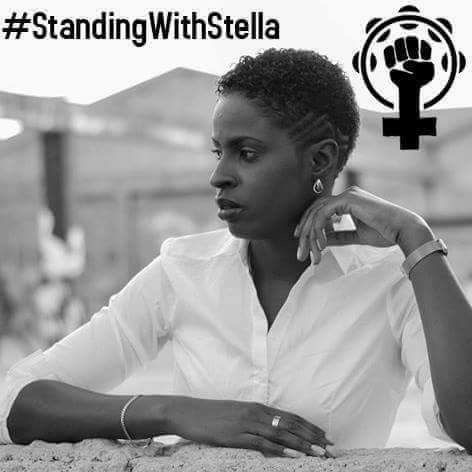
Gleaner column 3/1/2018
Looking back on 2017 one thing stands out. Jamaica was way ahead of the curve in what would become the most significant social disruptor, globally, in recent years—breaking the silence on sexual harassment and rape culture. As far back as early 2017 a young local activist, Latoya Nugent, had the gumption to start the #SayTheirNames campaign in Jamaica accompanied by a list of offenders who had been named by young girls and women as their violators. For this she was vilified and treated like an enemy of the state, with six assault rifle-bearing members of the Major Organised Crime and Anti-Corruption Agency (MOCA) descending on Mary Seacole Hall at the University of the West Indies to arrest her.
The actions of Latoya Nugent, and her close allies Nadine Spence, Taitu Heron and others gave rise to what is now known as The Tambourine Army because in accusing the then leader of the Moravian Church, Paul Gardner, Nugent tapped him on the head with a tambourine. This caused several senior activists and journalists to harshly criticize the tactics of the younger generation of activists, on the grounds that their modus operandi was too militant and they were using violence to make their point. Never mind the far more serious violence these women were protesting, assault with a tambourine became a thing in Jamaica.
In India too a young lawyer named Raya Sarkar started a growing ‘hall of shame’ list of names of sexual predators leading to a remarkably similar fallout between an older generation of feminists and a younger, more impatient one, tired of waiting for ‘due process’ to trip in. Like Nugent’s list in Jamaica care was taken to ensure that complaints about sexual predation were registered based on evidence corroborating the accusation. The difference was that the Indian list came in the wake of the phenomenally successful US-based #MeToo campaign in October 2017 whereas the Tambourine Army and the #SayTheirNames campaign in Jamaica were already in full swing by February 2017.
The problem of rape in Jamaica is not new. According to artist Judy Ann Macmillan her mother, Vida J. Macmillan, did her best to change the rape laws of Jamaica in the 70s with continuous letters to the Gleaner. The punishment in her day for raping a child was twelve lashes. Judy Ann grew up on the story that her mother had even tried to talk to Edna Manley about it and Edna’s response was “If you are about to be raped dear I think you should lie down and enjoy it.” Mind you those were the days of the ideology wars and Vida and Edna came from opposite sides of that divide.
The sheer number of women and children routinely being sexually violated even today points to a pervasive ‘rape culture’ that is so deeply ingrained and accepted that there is hardly any outcry against it. Most women don’t even bother to report their rapes because of the tortuous procedures involved that make them relive the trauma in the process of being interviewed by police and legal personnel bristling with disbelief and completely lacking in empathy. Nor is this a local problem only. As @LauraOlin tweeted “Why women don’t report: 60 women give the same account of Bill Cosby and a jury still can’t agree that he raped anyone.”
Latoya Nugent was ahead of her time in the stellar championing of victims’ rights to call out their aggressors by name. So important did a similar movement become in the US only months later that Time magazine named as its persons of the year, The Silence Breakers—the women who had the courage to speak to the New York Times about their sexual exploitation at the hands of Hollywood mogul, Harvey Weinstein.
Meanwhile I heard a local journalist complaining that he preferred the hashtag #MeToo to #SayTheirNames because the latter was too confrontational. Yet as a vice.com article titled The Trouble With Saying ‘Me Too’ pointed out: “For each of us who have been raped, assaulted or harassed, there is at least one rapist, at least one abuser. These are the people who need to be held accountable, instead of survivors being put on trial to prove their assaults were bad enough to count for something.” In France, the campaign used the hashtag #BalanceTonPorc – roughly translated as “snitch out your pig” a far more hard-hitting and unflattering tag than #SayTheirNames.
Naming those who injure you is important, breaking harmful silences is crucial. Let the Tambourine Army do its work. As an anonymous supporter of Nugent’s said, “Men will hear tambourines shake in their heads anytime they feel tempted to touch a woman or child, and they will think twice. They are the ones who will be afraid.”














